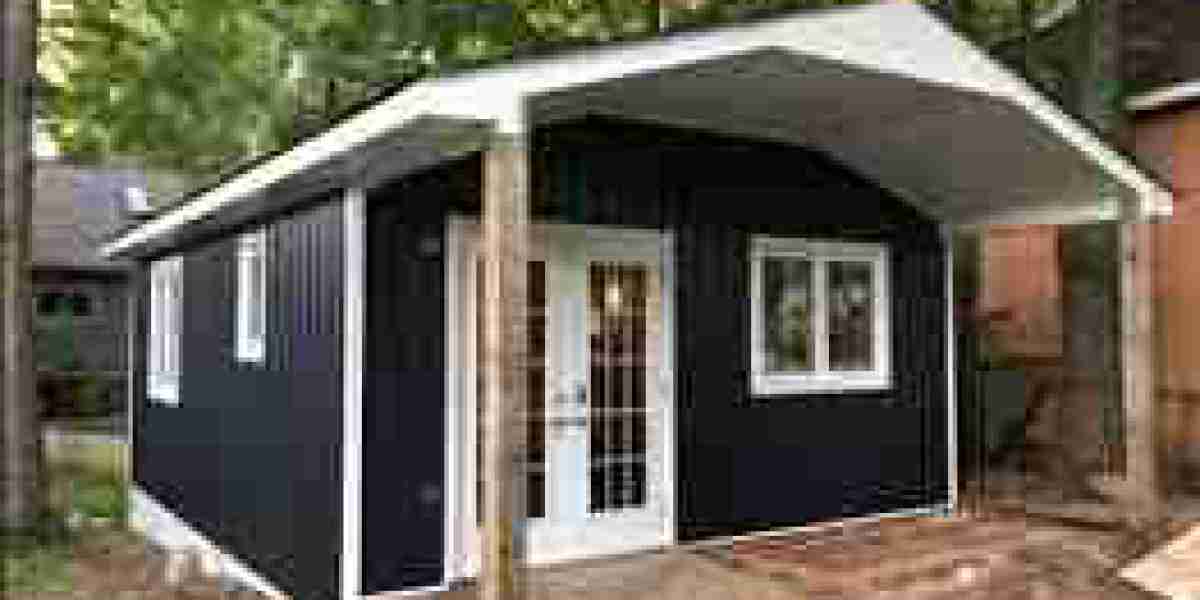When it comes to home exteriors, siding is one of the most important and visible features. More than just a decorative covering, siding plays a crucial role in protecting your home from the elements, ensuring energy efficiency, and maintaining structural integrity. Whether you’re building a new house or renovating an existing one, understanding the different types of siding available, their benefits, and the maintenance required will help you make the right choice for your home. This article will explore the types, materials, installation, and upkeep of siding, giving you a comprehensive guide to this vital component of your home’s exterior.
What is Siding?
Siding refers to the protective material attached to the exterior of a home, designed to shield it from weather conditions such as rain, wind, snow, and extreme temperatures. It also serves as an insulating layer, helping to regulate your home’s interior temperature and reduce energy consumption. Siding plays an essential role in your home’s curb appeal, as it is one of the first things people notice when they look at your property.
Siding comes in a variety of materials, each offering different levels of durability, appearance, and maintenance requirements. Choosing the right siding depends on factors such as your home’s architectural style, climate, budget, and personal preferences.
Purpose of Siding
Siding serves several important functions for a home:
Protection from the Elements: The primary function of siding is to protect the home’s structure from environmental factors such as rain, snow, wind, and UV radiation. By acting as a barrier, siding helps prevent moisture from entering the walls, which can lead to mold growth, rot, and structural damage.
Energy Efficiency: Siding acts as an insulating layer that helps maintain a consistent temperature inside the home. Certain types of siding, especially when combined with insulation, can significantly reduce heating and cooling costs by preventing heat loss in winter and keeping the interior cool in summer.
Aesthetic Appeal: The right siding can dramatically enhance your home’s appearance. It comes in a wide range of styles, colors, and textures, allowing homeowners to achieve the desired look, whether they prefer a modern, rustic, or traditional aesthetic. Siding also adds to the overall curb appeal, which can increase the property’s value.
Durability and Low Maintenance: Quality siding materials are designed to withstand harsh weather conditions and require minimal upkeep compared to other exterior options such as wood. Durable siding helps protect the structural integrity of your home, prolonging its lifespan and reducing maintenance costs over time.
Increase in Property Value: Installing high-quality siding can boost the market value of your home. A well-maintained exterior not only enhances curb appeal but also reassures potential buyers that the home has been cared for and protected against weather-related damage.
Types of Siding
There are several different types of siding available, each with unique features and benefits. The choice of siding depends on factors such as climate, budget, and aesthetic preferences.
Vinyl Siding: Vinyl siding is one of the most popular and affordable options on the market. Made from polyvinyl chloride (PVC), it is known for its durability, low maintenance, and wide range of colors and textures. Vinyl siding is resistant to rot, pests, and moisture, making it ideal for a variety of climates. It is also easy to clean and does not require painting. However, vinyl may crack in extremely cold weather and can fade over time when exposed to intense sunlight.
Fiber Cement Siding: Fiber cement siding is a composite material made from cement, sand, and cellulose fibers. It offers the appearance of natural materials like wood or stone but with the added durability and resistance to fire, rot, and insects. Fiber cement siding is known for its longevity and can withstand extreme weather conditions, making it an excellent choice for homes in areas prone to storms or wildfires. Although it requires more maintenance than vinyl, such as repainting every few years, it provides a premium look that can boost property value.
Wood Siding: Wood siding has a timeless appeal and is often chosen for its natural beauty. It can be made from various types of wood, including cedar, redwood, and pine. Wood siding offers versatility in terms of style and finish, allowing homeowners to paint or stain it in any color. However, it requires regular maintenance to prevent rot, insect infestation, and weather damage. Wood siding is less durable than synthetic options and may need repainting or resealing every few years.
Aluminum Siding: Aluminum siding is a durable, lightweight option that was once very popular before vinyl became the go-to material. It is fire-resistant, rot-proof, and not susceptible to insect damage. Aluminum siding is a good choice for homes in coastal areas since it doesn’t rust. However, it can dent easily, and the paint may fade or chalk over time. Though it is less commonly used today, aluminum remains an affordable and reliable option for certain applications.
Stucco Siding: Stucco siding is a type of exterior plaster made from cement, sand, lime, and water. It is typically applied in multiple layers over a wood or metal framework. Stucco is popular in dry, warm climates, particularly in southwestern and Mediterranean-style homes. It provides excellent insulation and is highly durable, resisting fire, rot, and pests. However, stucco can crack in areas with significant temperature fluctuations or seismic activity, and it requires occasional maintenance to repair these cracks.
Brick Siding: Brick siding offers a classic, long-lasting option that adds a sense of permanence to any home. It is made from fired clay and provides excellent durability, fire resistance, and insulation. Brick requires minimal maintenance and can last for decades without significant deterioration. However, it is one of the more expensive siding options and may not be suitable for all budgets.
Stone Veneer Siding: Stone veneer siding mimics the appearance of natural stone at a fraction of the cost. Made from lightweight, manufactured stone, it offers the aesthetic appeal of stone without the weight and installation difficulties. Stone veneer is resistant to weather and pests, but it requires professional installation to ensure proper moisture management and durability.
Installation of Siding
Proper installation of siding is essential for ensuring that it provides the necessary protection and aesthetic appeal. The installation process can vary depending on the type of siding and the condition of the underlying structure. In general, installing siding involves the following steps:
Preparing the Surface: Before siding can be installed, the exterior walls must be clean, dry, and free of damage. Any existing siding, mold, or rot should be removed, and the surface should be repaired as needed.
Applying a Weather Barrier: Most siding installations involve the application of a weather-resistant barrier, such as house wrap or building paper, to provide additional protection against moisture infiltration.
Installing Siding Panels or Shingles: Siding materials are then attached to the exterior walls using nails, screws, or adhesives, depending on the material. Proper alignment and spacing are crucial to ensuring that the siding looks uniform and functions as intended.
Sealing and Trimming: Once the siding is in place, all seams, edges, and corners are sealed to prevent water penetration. Trim pieces are added around windows, doors, and other openings to provide a finished look and further enhance the home’s weather resistance.
Maintenance of Siding
Different types of siding have varying maintenance requirements. Regular maintenance is essential to prolong the lifespan of the siding and keep it looking its best. Here are some general tips for siding maintenance:
Cleaning: Siding should be cleaned periodically to remove dirt, mold, and mildew. This can usually be done with a garden hose or pressure washer, depending on the material.
Inspecting for Damage: Regularly inspect the siding for signs of wear, such as cracks, peeling paint, or loose panels. Prompt repairs can prevent more significant issues from developing.
Repainting or Staining: Some types of siding, such as wood and fiber cement, may require repainting or staining every few years to maintain their appearance and protect them from the elements.
Seal Gaps: Check for gaps around windows, doors, and seams where water could penetrate. Use caulk or sealant to close these gaps and protect the underlying structure.
Conclusion
Siding is a crucial component of your home’s exterior, providing protection, insulation, and aesthetic appeal. With a variety of materials and styles available, homeowners can choose siding that fits their budget, design preferences, and climate requirements. Whether you opt for the affordability of vinyl, the durability of fiber cement, or the timeless beauty of wood or brick, proper installation and regular maintenance will ensure your siding lasts for decades, keeping your home safe and visually appealing.














